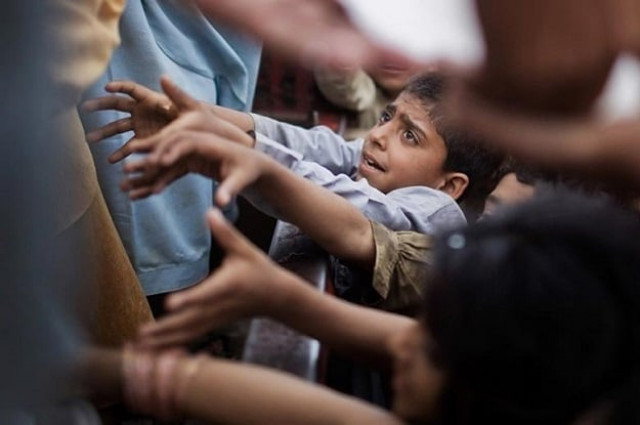
In South Asia, the Prevalence of Undernourishment (PoU) was estimated to be as high as 14.9% in 2016-2018. In Pakistan, the average incidence has only slightly reduced, by 3%, in the period 2004-2014, and remains at critical levels, at around 20%, with about 40 million of its population undernourished today, with stark variations across the country. For example, the PoU was estimated at 12% in Islamabad, 22% in Sindh and 40% in Balochistan. The efforts aimed at reducing childhood stunting have had a more significant impact, with the stunting rate decreasing from 43% to 37.6% in the period from 2012-2018. But 9.5 million children in Pakistan are still stunted today. By contrast, and this does seem a contradiction in terms, the waistlines of men and women have been expanding in recent decades, and obesity is on the rise in Pakistan, with nearly 8% (9 million) adults being obese.
What we eat, of course, defines how well-nourished (or malnourished) we are. In other words, it is not simply quantity (as in how much we eat) that is causing the malnourishment. It has more to do with what we are producing, how we are producing it (is it safe? Is it sustainable?), and what we are eating — or not eating. Simply put, the world is facing a triple burden of malnutrition — from undernourishment, micronutrient deficiencies (lack of vitamins and minerals) and from becoming overweight or obese. At the same time, we are depleting our soils, oceans, forests and biodiversity, when agriculture systems are not sustainable. In Pakistan, nearly half of the average caloric intake is derived from consumption of three cereal crops — wheat, rice and maize.
The 2019 UN Report on the State of Food Security and Nutrition (SOFI) introduced a second indicator for monitoring Zero Hunger SDG Target 2.1, the prevalence of moderate or severe food insecurity based on the Food Insecurity Experience Scale (FIES). While severe food insecurity is associated with the concept of hunger, which captures issues of food availability, people experiencing moderate food insecurity face uncertainties about their ability to obtain food regularly because of issues of access and stability in access, and have been forced to compromise on the quality and/or quantity of the food they consume (utilisation), including how diversified their diet is. The prevalence of food insecurity is slightly higher for women than for men, in all continents.
Economic slowdowns and downturns, such as the one Pakistan is experiencing, disproportionally challenge food security and nutrition, wherever there are deep inequalities in the distribution of income and other resources. The poor and the rural poor in particular are, therefore, more vulnerable to economic downturns. Recent analysis tends to show the strong relationship between poverty and food insecurity, in both urban and rural areas, and more so in rural areas. Income or expenditure levels have a significant impact on food security and PoU, and child stunting rates are correlated with extreme poverty at the country level. But income alone is not the only determinant to improve food security, where a smaller household size seems another important variable.
Pakistan has achieved an uninterrupted and significant poverty reduction since 2004. Between 2004 and 2016 the incidence of poverty was halved, from 52% to 24%, nationally. The urban areas have registered a far larger reduction in incidence of poverty (66%) than rural areas 47%. Still, 39% of Pakistan’s population is multi-dimensionally poor. However, the close linkages of and nexus between poverty and food insecurity in Pakistan still need to be explored and fully understood. The new data on Pakistan FIES and poverty that the Pakistan Bureau of Statistics will soon be releasing will allow more in-depth analysis.
It is important to focus on how to continue progress to improve food security and nutrition, and lower poverty incidence in Pakistan, despite the economic slowdown projected, the low agriculture sector growth, the outdated land tenure governance and tenure security in several provinces, and strong income inequalities.
Most of Pakistan’s poor are in the rural areas, with multi-dimensional rural poverty at 55% and urban at 9%. Smallholder men and women farmers can learn how to adopt safe and climate resilient agriculture and livestock practices, kitchen gardening and how to reduce post-harvest losses. This will increase their incomes and provide more diverse food availability at their household. They quickly gain awareness of the importance of breastfeeding newborns, of a diversified diet that includes milk, eggs, vegetables, fruits and pulses on a regular basis, of basic hygiene and safe drinking water. Social protection, incentivising nutritious school feeding and school attendance are also critical for food security and nutrition for these men and women and their families, especially during economic slowdowns, and to break the poverty and food insecurity cycle. This is a Zero Hunger programme that can improve food security and nutrition and help pave the way towards poverty eradication. Solutions are there. We need action — our actions are our future.
Published in The Express Tribune, October 16th, 2019.
Like Opinion & Editorial on Facebook, follow @ETOpEd on Twitter to receive all updates on all our daily pieces.






1726054615-0/OpenAI-(2)1726054615-0-270x192.webp)






COMMENTS
Comments are moderated and generally will be posted if they are on-topic and not abusive.
For more information, please see our Comments FAQ